Let's continue to spoil karma with translations from "The Drive" - this time an interesting article by the well-known Peter Butovsky "Enhanced Version Of Russia's Ka-52 Attack Helicopter Appears" ("The appearance of an upgraded version of the Russian Ka-52M combat helicopter").
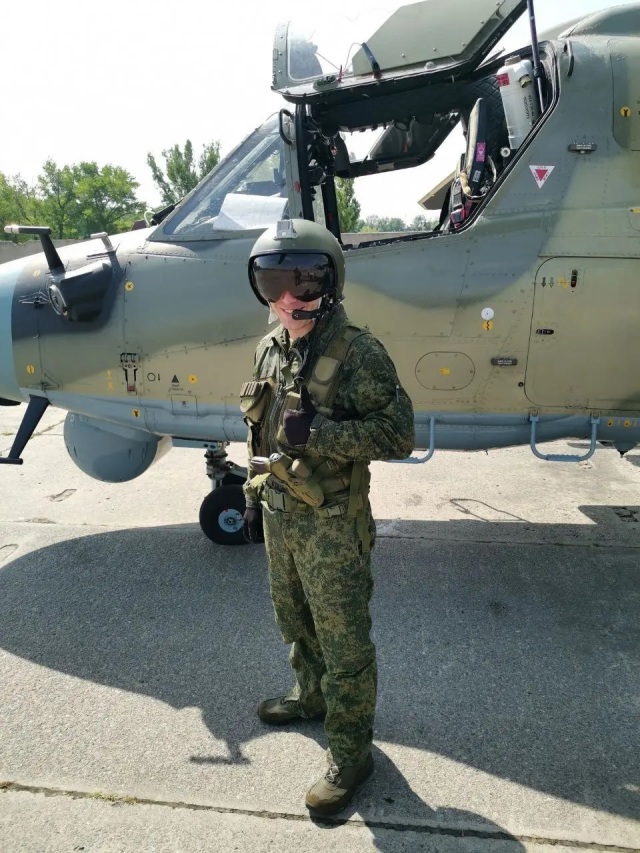
Serial combat helicopter Ka-52M of the Russian Aerospace Forces - photo posted on 07/14/2023 in the Telegram channel Fighterbomber
The first photos of the new upgraded Ka-52M combat helicopter, which entered service with the Russian Aerospace Forces, have appeared, and there is a high probability that this version is already participating in full-scale hostilities in Ukraine. While the original Ka-52 (Hokum) became the hallmark of the Russian campaign in Ukraine, suffering both heavy losses and constantly damaging Ukrainian armored vehicles, the new iteration of its improved version of the Ka-52M did not appear anywhere until last week.
The Ka-52M in question appeared in three photos posted on the usually well-informed Fighterbomber Telegram channel. Among other things, this channel conducts fundraising and gives Russian pilots participating in combat operations in Ukraine flight suits, shoes, radio stations, navigation devices, first aid kits and so on. In the photos posted on July 14, 2023, the pilots demonstrate some of the received gadgets against the background of the new version of the Ka-52.
The helicopter captured in the photos in the Fighterbomber channel has a fresh color, which indicates that it was delivered recently. Photos of this kind on this channel previously, as a rule, were taken at locations in Ukraine or at air bases in Russia that are involved in the campaign. While we can't be sure that these photos were taken in Ukraine or at a Russian airbase used in the conflict, the Fighter Bomber training camps for flight crews suggest that this is at least likely.
Reports in the media about the use of the Ka-52M in Ukraine have already appeared, but they were not supported by any pictures. For example, in September 2022, the Russian state news agency TASS reported on "successful tests of this upgraded helicopter during a special operation in Ukraine."
What is the Ka-52M?
On April 5, 2019, Kamov received a contract from the Russian Ministry of Defense for the Avangard-4 ROC, the purpose of which was to develop an upgraded Ka-52M helicopter (the ROC for the development of the Mi-28NM helicopter at the same time was codenamed Avangard-3). The actual work began much earlier than the issuance of the contract, and by this time the new equipment and weapons of the Ka-52M were almost ready.
In June 2020, the Progress plant in Arsenyev in the Russian Far East, which produces the Ka-52, received an order to convert two helicopters into the Ka-52M version for testing. The first flight after this revision, the first Ka-52M made on August 10, 2020. According to the contract, the Ka-52M was supposed to complete all tests and be ready for mass production by the end of September 2022.
The first Ka-52M was demonstrated to the public at the International Aviation and Space Salon (MAKS) in July 2021, and then at the Army-2021 exhibition in August. The helicopter received an upgraded turret with an optoelectronic targeting station GOES-451M, an updated on-board communication complex BKS-50M, as well as a weapon control system SUO-806PM, capable of using new weapons. The most significant addition to the helicopter's armament is the integration of an LMUR guided missile with a range of up to nine miles (up to 14.5 km).
Other updates have been made to the helicopter itself. The main rotor blades of the Ka-52M have more powerful heating elements, which allows the helicopter to operate in a wider temperature range, including in the Arctic, which has been the focus of special attention of the Russian military strategy lately. The chassis is equipped with wheels of increased load and wear resistance, the helicopter also has outdoor LED lights. The crew cabin has improved ergonomics, and is also better adapted for flying with night vision goggles.
As for the technical characteristics, the Ka-52M (known at the factory as "Product 800.50") has a maximum take-off weight of about 27,000 pounds (12250 kg), a maximum speed of 186 miles per hour (300 km /h), a ceiling of 18045 feet (5500 m) and a flight range of 286 miles (480 km).
Production is increasing
The contract for the first batch of 30 Ka-52M for the Russian Aerospace Forces was signed on August 24, 2021 during the Army-2021 forum; of these, 15 helicopters were to be delivered in 2022 and 15 in 2023. Most likely, this contract has already been fulfilled. During the next Army-2022 forum, the Russian Ministry of Defense placed another order for an unknown number of Ka-52M. In July 2023, Russian Defense Minister Sergei Shoigu said that deliveries of the Ka-52 in 2023 had "doubled" compared to 2022, that is, they amounted to about 30 helicopters, if this is true.
After about 18 months of fighting, Russia lost almost 40 Ka-52 combat helicopters in Ukraine out of about 140 it had at the beginning of the war (for all types of attack helicopters, Russia lost about 70 out of more than 400 at the beginning of the war). In addition to the Ka-52, two other types of combat helicopters are produced in Russia - the Mi-28N/NM and the Mi-35M, both of which are manufactured at the Rostvertol plant in Rostov-on-Don. Along with the information about doubling the production of the Ka-52, Shoigu said that the production of the Mi-28 will be tripled in 2023 compared to 2022 (that is, to about 50 units per year).
New GOES-451M payload
Returning to the new photos of the Ka-52M, arrow number one in the picture points to the GOES-451M optoelectronic station installed under the front of the fuselage; in the standard version of the helicopter, the GOES-451 turret is installed in this position. The turret houses a thermal imaging camera, a television camera, a laser range finder, a laser beam guidance system for anti-tank missiles, as well as a laser sight.
The GOES-451M payload sensors provide an increased detection and recognition range to match the range of new weapons, including the LMUR missile. The payload manufacturer, Yekaterinburg-based JSC UOMZ, claims a detection range of 9.3 miles (15 km) on the TV channel and 12.5 miles (20 km) on the thermal imaging channel; the target recognition range is 7.5 miles (12 km) and 5 miles (8 km), respectively.
New on-board defense complex L418 "Monoblock"
Arrow number two points to the ultraviolet sensor (direction finder) warning of the approach of the missile (MAWS) L418-2 manufactured by HYPO (Kazan), which is part of the on-board defense complex L418 "Monoblock". Conventional Ka-52s, as well as previously seen prototypes of the Ka-52M, have an onboard defense complex L370P2 "Vitebsk" with sensors L370-2. Four such sensors are located on the sides of the nose of the fuselage and tail boom, giving 360-degree coverage around the helicopter.
The L418 "Monoblock" complex is manufactured by JSC "Research Institute "Ekran" (Samara). This is the modernization of the L370 Vitebsk complex, which operates in a wider frequency range and at longer ranges.
Although this is not visible in the new photos, the Ka-52M helicopter most likely also has other new components of the L418 complex, primarily two fairing stations of the L418-5 directional infrared counteraction system (DIRCM) manufactured by JSC SKB Zenit (Zelenograd), installed on the sides of the lower part of the fuselage, directly in front of the main landing gear struts. The new L418-5 station has an angular shape, whereas the previous L370-5 was a rotating sphere (nicknamed "eggs of life"); a new lamp SP3-1500 (formerly SP2-1500) is installed inside, generating modulated infrared and ultraviolet radiation to suppress infrared GOS of air-to-air missiles and "the surface is air."
Interestingly, the sensors of the L418 "Monoblock" complex were installed on Ka-52E helicopters sold to Egypt long before they appeared on Russian helicopters. This was due to the stricter formal requirements of the Russian Ministry of Defense for equipment, as well as, possibly, additional functions required by the Russian military. The introduction of new equipment of this kind in Russia requires multi-stage testing, which is not necessarily necessary for a foreign customer. Similarly, Mi-28NE helicopters delivered to Iraq received airborne radars in February 2015, while deliveries of these helicopters from the radar to the Russian Aerospace Forces began only at the end of 2017.
Now, in wartime conditions, Russia has significantly reduced some of the requirements and is throwing equipment into battle, apparently still far from being worked out. Perhaps the best example of this is the universal UMPC planning and correction module installed on aerial bombs.
New radar
The most interesting thing is probably the new radar installed on the Ka-52M shown in the last photos. Arrow number three points to a small air intake on the underside of the fairing at the front of the fuselage; on the other hand, symmetrically, there is another similar air intake. There are no such air intakes on any of the previously seen Ka-52 helicopters.
A single air intake of a larger size, but otherwise similar, can be seen on the prototype of the Ka-52K naval combat helicopter with the tail number "103". And this leads us to a probable conclusion about the purpose of these air intakes. On the Ka-52K ("103"), this air intake is used to cool the radar antenna with an active phased array (AFAR) "Cutter", which is being tested on this helicopter.
The prototypes of the Ka-52M have the same radar as the regular Ka-52 - FH01 "Arbalet-52" produced by JSC "Phazotron-NIIR Corporation" (Moscow). This is a Ka-band radar (wavelength 8 mm) with a wide 31.5-inch (80-cm) antenna with mechanical scanning in the nose of the helicopter. The range of its detection of a large ground target (for example, a railway bridge) is 15.5 miles (25 km) or 7.5 miles (12 km) for a tank. The weak side of the FH01 radar is the impossibility of direct guidance with its help of guided missiles. To guide the weapon, information about the target must be transmitted by radar to the GOES-451 optoelectronic station, which is the main means of targeting the Ka-52.
As for the radar on the new version of the Ka-52M helicopter, then, most likely, it is the V006 Cutter radar of the St. Petersburg company Zaslon (the same company produces the V004 radar used on the Su-34 front-line bomber). Radar V006, or RZ-001 "Cutter" has a fixed AFAR antenna with 640 transceiver modules. The radar operates in the X-band and, according to the manufacturer, can detect a group of tanks at a range of 25 miles (40 km) or a fighter at a range of up to 31 miles (50 km). The Cutter radar has air cooling, so it needs additional air intakes in the fairing.
Although the Cutter radar is the most likely station option for the Ka-52M, it is not the only one. Phasotron-NIIR, the manufacturer of the current standard FH01 radar, also has its own offer. The upgraded FH02 radar has two separate antennas: a mechanical movable slit array for the Ka-band and an AFAR for the X-band. This solution provides simultaneous search for surface and air targets, the implementation of advanced algorithms for detecting and tracking targets, as well as greater reliability. The X-band gives a much longer range, albeit at the expense of lower resolution. According to the company, the tank can be detected at a distance of 12.4 miles (20 km) in the Ka-band or 21.8 miles (35 km) in the X-band.
We need to wait for additional images of the Ka-52M in its new version to get more clarity about the exact configuration of this new version, as well as whether it is already involved in combat operations in Ukraine. At this point, it certainly seems likely. In any case, it is clear that the helicopter as a whole, including in its original version of the Ka-52, will remain the key armament complex of the Russian Aerospace Forces during the Ukrainian campaign.
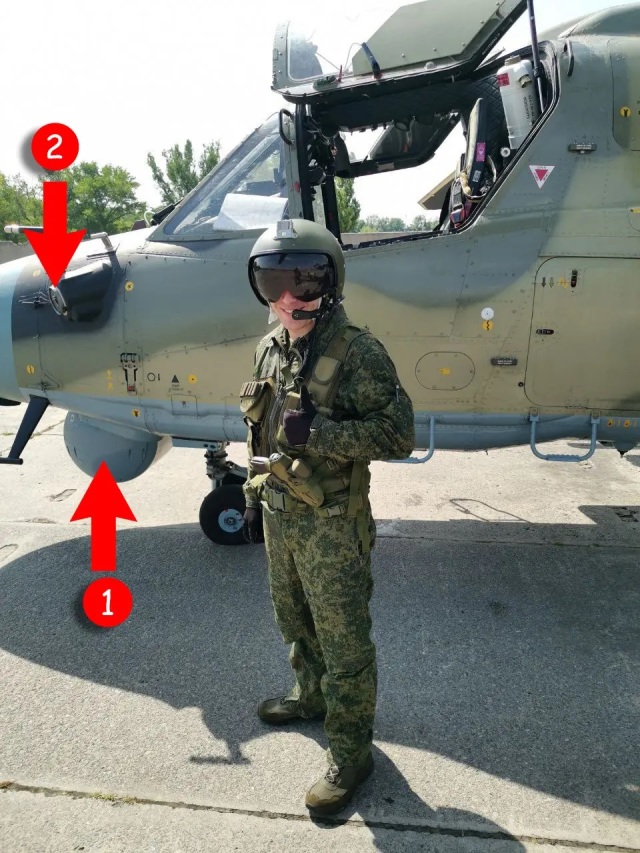
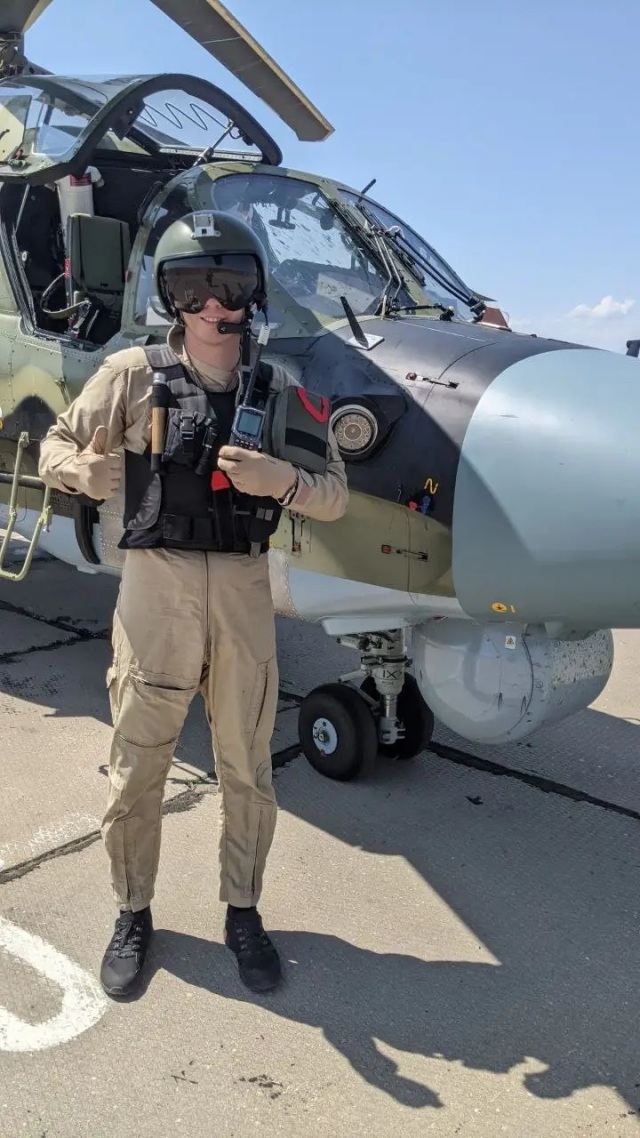
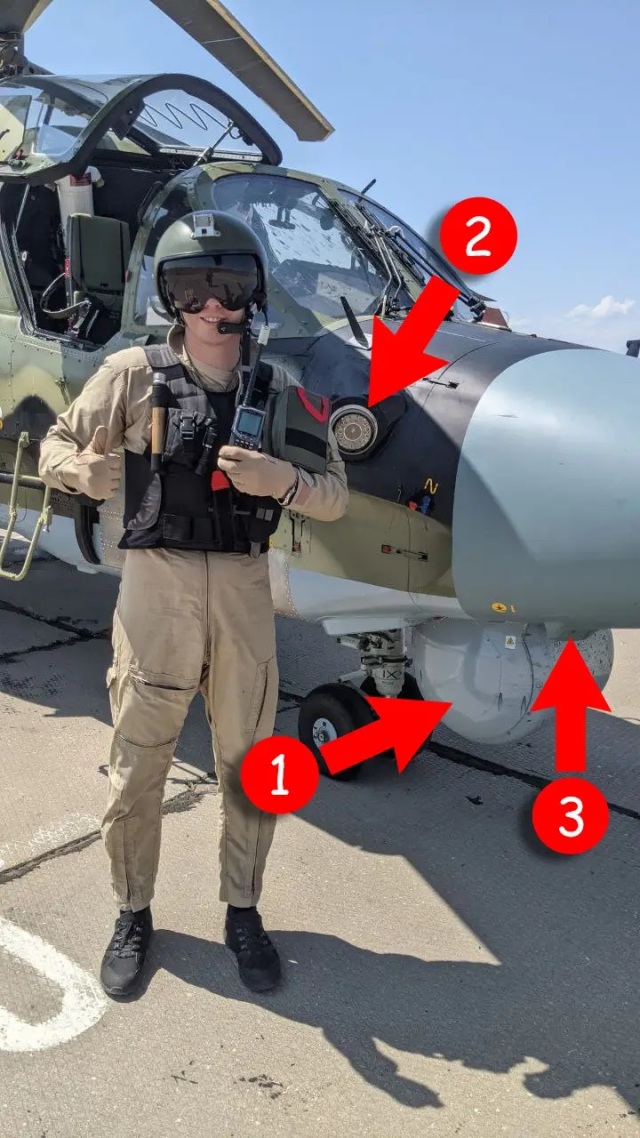
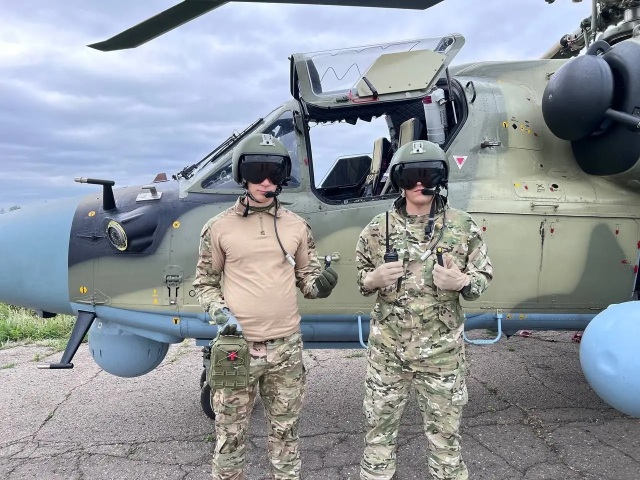
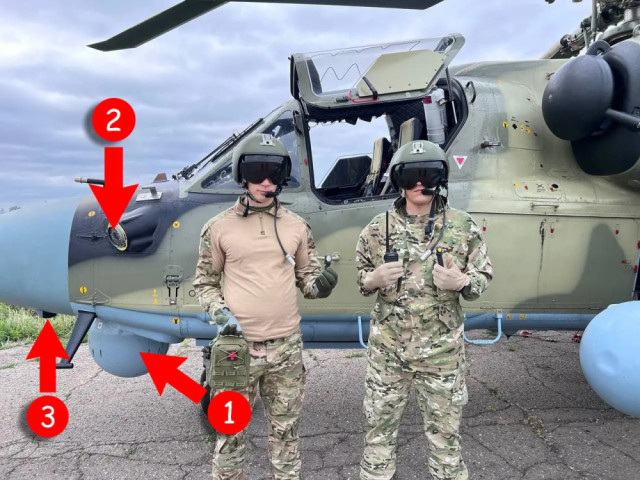
Serial combat helicopter Ka-52M of the Russian Aerospace Forces - photos posted on 07/14/2023 in the Fighterbomber Telegram channel
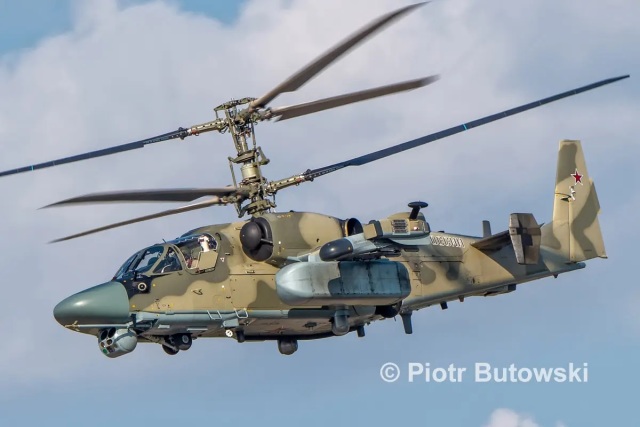
The first prototype of the upgraded Ka-52M combat helicopter during a demonstration flight at the MAKS-2021 International Aerospace Salon in Zhukovsky in June 2021. An unusual-shaped container is clearly visible at the end of the left wing with a radio-transparent nose with AS-UAV data transmission equipment for the use of the guided missile LMUR (c) Piotr Butowski
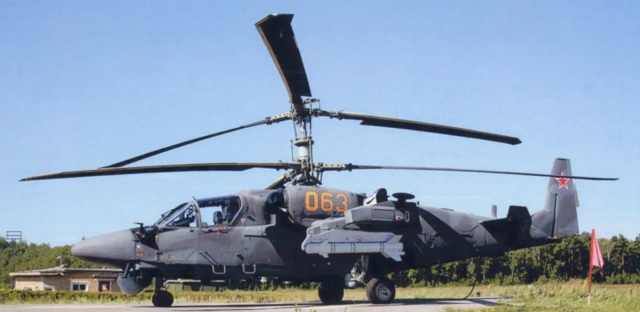
Guided missile LMUR on the suspension of one of the prototypes of the Ka-52 (c) helicopter of JSC "Russian Helicopters"
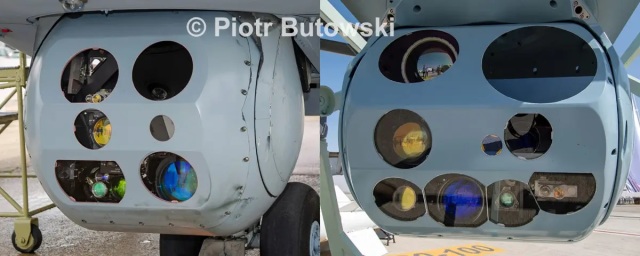
The standard optoelectronic station of the GOES-451 of the Ka-52 helicopter (left) and the new optoelectronic station of the GOES-451M of the Ka-52M helicopter (right) (with) Piotr Butowski
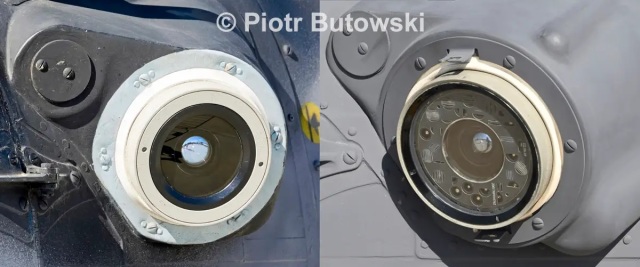
Standard L370-2 (left) and upgraded L418-2 (right) missile approach warning sensors (c) Piotr Butowski
jpg" title="Standard L370-5 (left) and upgraded L418-5 (right) directional infrared counteraction stations">
Standard L370-5 (left) and upgraded L418-5 (right) directional infrared counteraction stations (c) Piotr Butowski
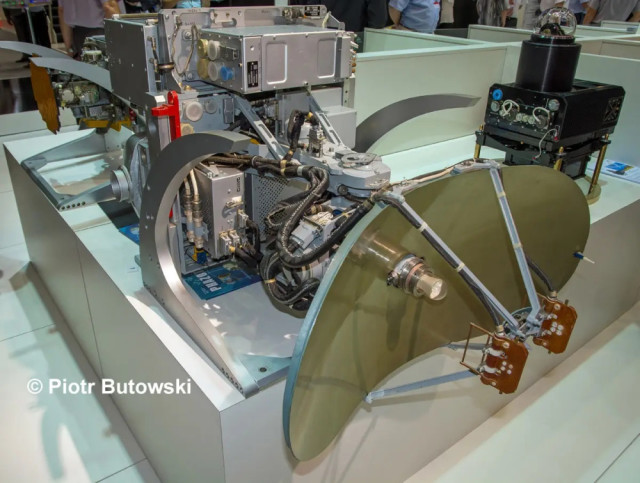
Onboard radar FH01 "Arbalet-52" Ka-band with a mechanical scanning antenna, which is used on the standard Ka-52 (c) Piotr Butowski helicopter
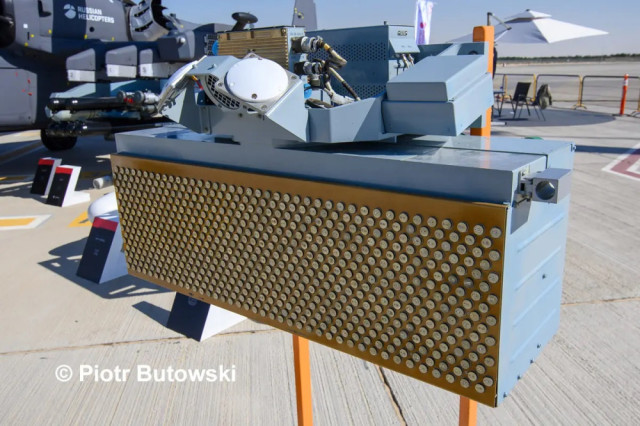
New onboard radar V006 (RZ-001) "Cutter" with an active phased array antenna, which may be used on the upgraded Ka-52M (c) Piotr Butowski helicopter
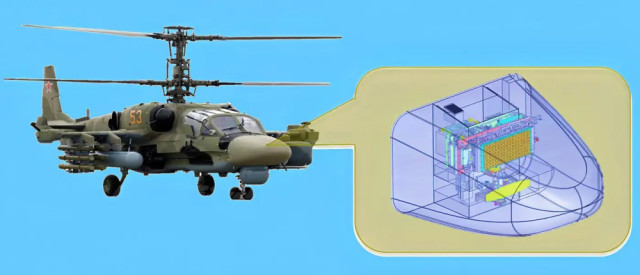
On-board radar FH02 and the scheme of its installation on the Ka-52 helicopter (c) JSC "Phasotron-NIIR Corporation"
